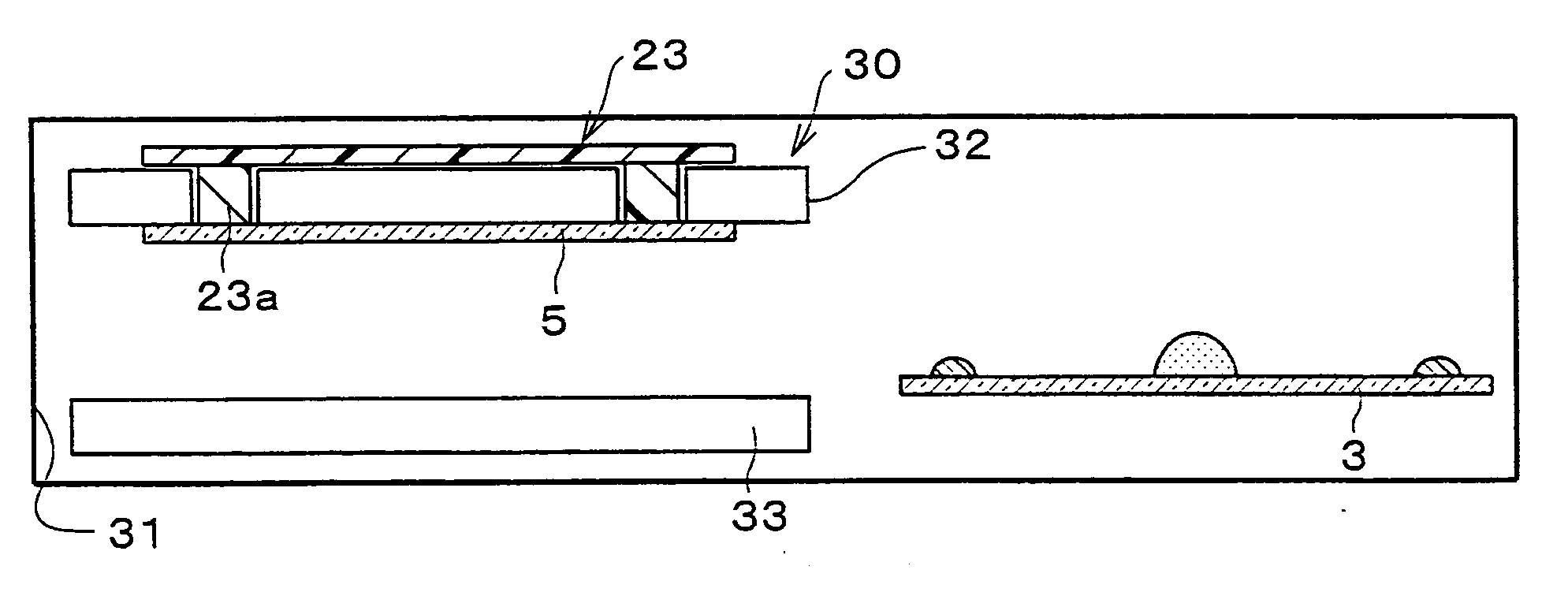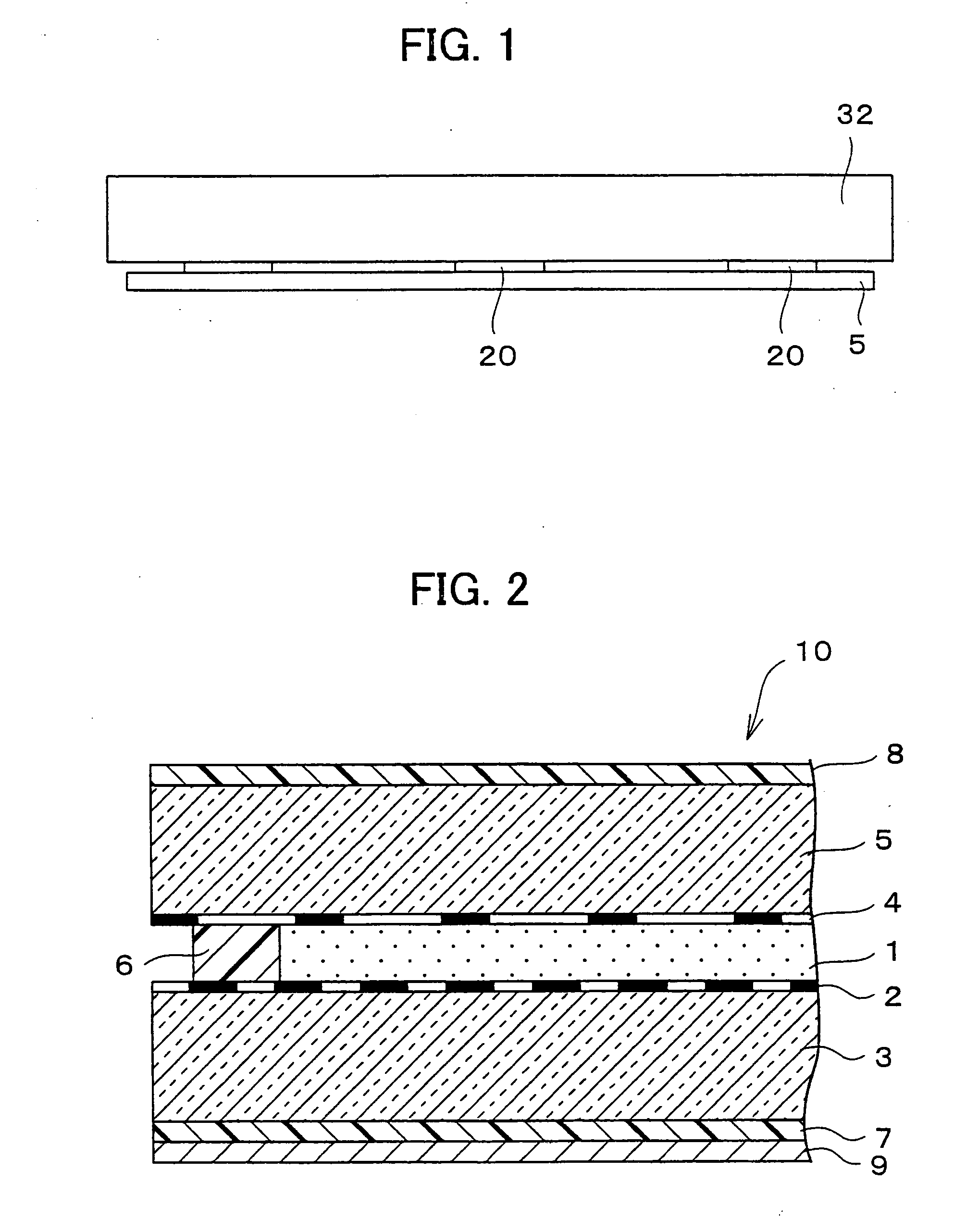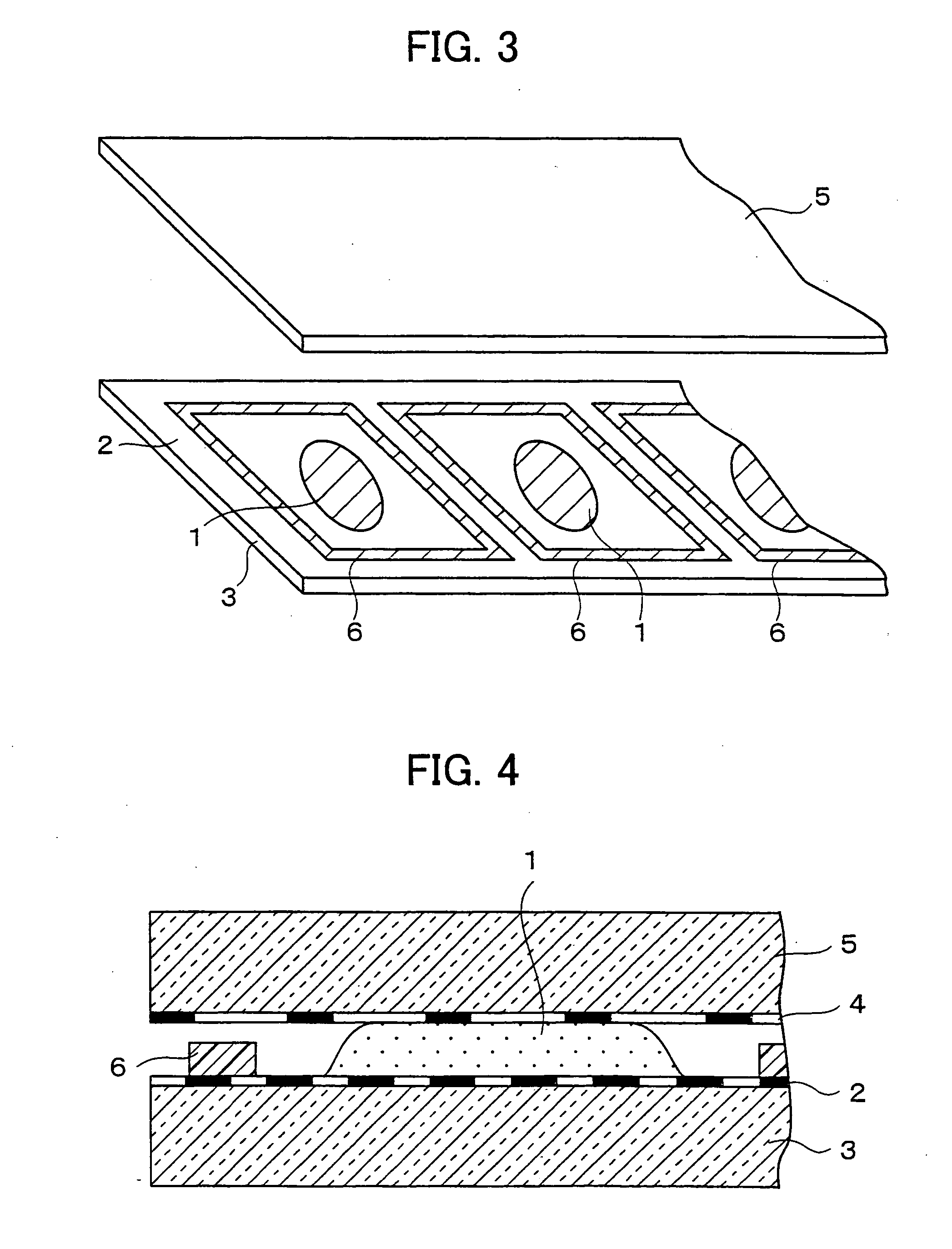Method for holding substrate in vacuum, method for manufacturing liquid crystal display device, and device for holding substrate
a technology of liquid crystal display device and substrate, which is applied in the direction of conveyors, instruments, films/foil adhesives without carriers, etc., can solve the problems of adhesive agent remaining on the substrate, adhesive sheet cannot be detached from the substrate, and the vacuum suction method cannot be used to hold the upper substrate, etc., to achieve the effect of easy substrate position registration
- Summary
- Abstract
- Description
- Claims
- Application Information
AI Technical Summary
Benefits of technology
Problems solved by technology
Method used
Image
Examples
example 1
[0120] An experiment was carried out to examine the effectiveness of adhesion of the adhesive pad 21 made of unsaturated polybutadiene described in the First Embodiment.
[0121] Firstly, an unsaturated polybutadiene resin (trade name “APR K-11”) of the Asahi Kasei Corporation was used as a material of the adhesive pad 21. Note that the APR is a registered trademark. Generally, this unsaturated polybutadiene is used as a material for a relief in relief printing.
[0122] Then, a negative film, a cover film, the unsaturated polybutadiene resin, and a base film were set in this order on a glass plate of an exposure device, and an upper glass plate was used to apply pressure thereon.
[0123] Next, after forming a back separation layer by back exposure, a relief exposure was carried out to form a sharp relief section (pad section). Then, a portion of the resin which had not been hardened was washed by a washer liquid.
[0124] After that, the unsaturated polybutadiene resin was dried by hot ai...
example 2
[0178] A comparative experiment was carried out to examine whether or not the adhesive sheet 51 and the adhesive pad 52 with their raised portions 61 arranged in a hexagonal pattern as described above in this embodiment can evenly apply pressure on the glass substrates.
[0179] In the experiment, an adhesive sheet 81 (shown in FIG. 20(a) through FIG. 20(c)) was formed as a comparative example to the adhesive sheet 51 (shown in FIG. 14(a) through FIG. 14(c)). As shown in FIG. 20(a), which is a plan view of the adhesive sheet 81, on a lower face (adhesive face) of the adhesive sheet 81, a multiplicity of raised portions 82, each having an elliptical shape, are provided side by side with their long sides directed in one direction. The raised portions 82 are equivalent to the raised portions 61 in the adhesive sheet 51. As shown in FIG. 20(b), which is an enlarged view of FIG. 20(a), each of the raised portions 82 has a protruding wall which forms a closed ring. That is, in the adhesive ...
example 3
[0185] Further, an adhesive sheet 91 (shown in FIG. 21(a) through FIG. 21(c)) was formed as another comparative example of the adhesive sheet 51 (shown in FIG. 14(a) through FIG. 14(c)). As shown in FIG. 21(a), which is a plan view of the adhesive sheet 91, a multiplicity of raised portions 92 were provided on a lower face (adhesive face) of the adhesive sheet 91. The raised portions 92 are equivalent to the raised portions 61 of the adhesive sheet 51. As shown in FIG. 21(b), which is an enlarged view of FIG. 21(a), each of the raised portions 82 has a circular ring shape. As shown in a cross sectional view taken along zz-zz in FIG. 21(b), a through hole 93 for vacuum suction was provided in a central portion of each of the raised portions 92, penetrating through the adhesive sheet 91 in a thickness direction.
[0186] The raised portions 92 were formed with an outer diameter D1 of 3 mm as measured at the highest point of the circular ring, an inner diameter D2 of 2 mm, and a pitch PX...
PUM
| Property | Measurement | Unit |
|---|---|---|
| Adhesion strength | aaaaa | aaaaa |
| Flexibility | aaaaa | aaaaa |
| Surface | aaaaa | aaaaa |
Abstract
Description
Claims
Application Information
 Login to View More
Login to View More - R&D
- Intellectual Property
- Life Sciences
- Materials
- Tech Scout
- Unparalleled Data Quality
- Higher Quality Content
- 60% Fewer Hallucinations
Browse by: Latest US Patents, China's latest patents, Technical Efficacy Thesaurus, Application Domain, Technology Topic, Popular Technical Reports.
© 2025 PatSnap. All rights reserved.Legal|Privacy policy|Modern Slavery Act Transparency Statement|Sitemap|About US| Contact US: help@patsnap.com



